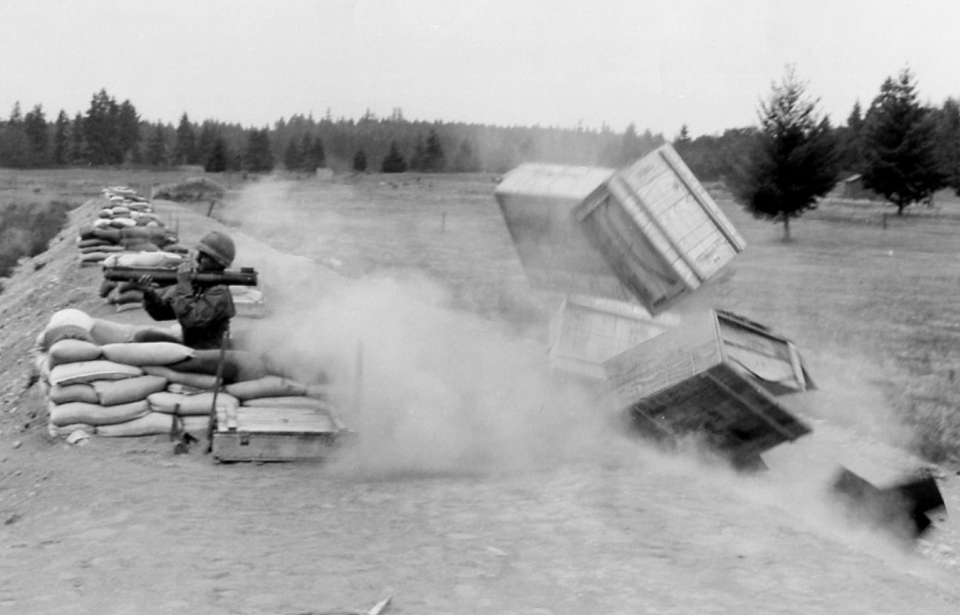In the Dirty Harry movie, The Enforcer (1976), the filmmakers needed to find a more powerful weapon than Harry Callahan’s Smith & Wesson Model 29. They selected the M72 LAW. The anti-tank weapon entered service with the US military in the early 1960s, and saw use during the Vietnam War. Multiple variants have since been developed, with the M72 LAW being exported to 39 countries over the course of its decades of service.
A need for anti-tank weapons arose during World War II
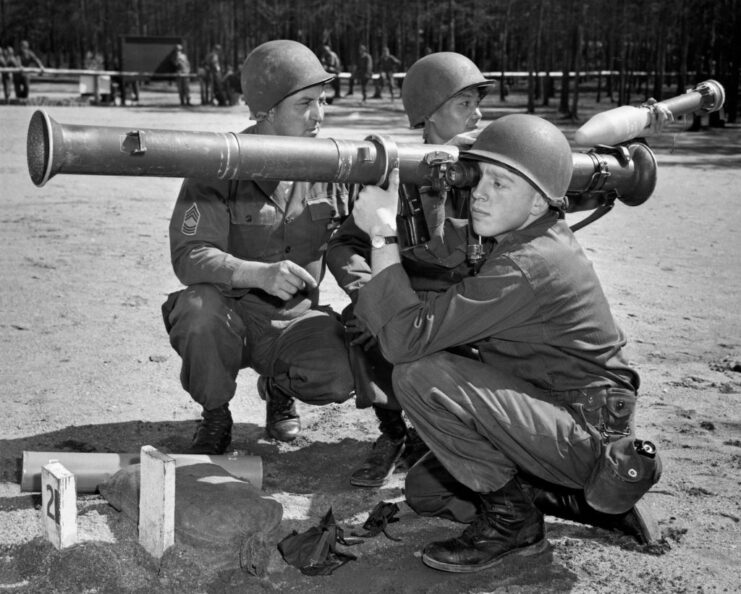
The impact of tanks on the battlefield became evidence during the Second World War. Traditional weapons were no match, and in an attempt to stop and destroy these armored vehicles, both the Allied and Axis powers developed anti-tank rocket launchers. The Americans created the bazooka, while the Germans developed the Panzerschreck and the Panzerfaust.
The M72 LAW was ultimately a combination of the bazooka’s immense firepower and the overall small size and cheapness of the Panzerfaust.
M72 LAW specs
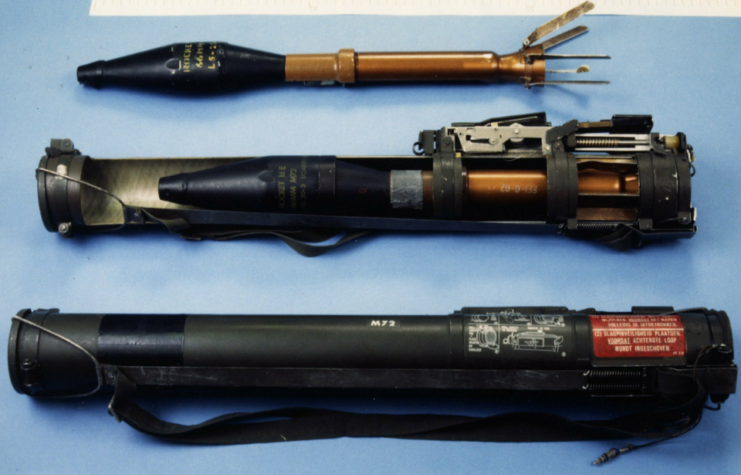
The M72 LAW is relatively small, weighing five and a half pounds and spanning just 34.67 inches when loaded. This design allows a single soldier to carry and operate the weapon.
To fire the M72, the operator must first manually extend the weapon, at which point two mechanical sights, one located at the front and one at the rear, spring up. There’s a percussion firing mechanism with a rubber-coated trigger bar, located atop the tube, which is then pressed down.
The M72 fires a single 66 mm HEAT (High-Explosive Anti-Tank) rocket. It has a muzzle velocity of 480 feet per second, with a minimum range of 33 feet and a maximum of 3,300 feet. In terms of effectiveness, the weapon is best used within 220 yards against stationary targets and 180 when fired at one that’s moving. For ranges beyond this, the chance of the M72 hitting its target is less than 50 percent.
When fired, the M72 doesn’t produce a significant recoil. That being said, it does create a back-blast of gasses that are 1,400 degrees Fahrenheit, which is dangerous to soldiers positioned up to 40 meters away.
In addition to the original M72 LAW, 21 variants have been produced. These differ from the original in numerous ways, including rocket type, size and weight. Versions have also been manufactured specifically for training purposes.
Effectiveness of the M72 LAW
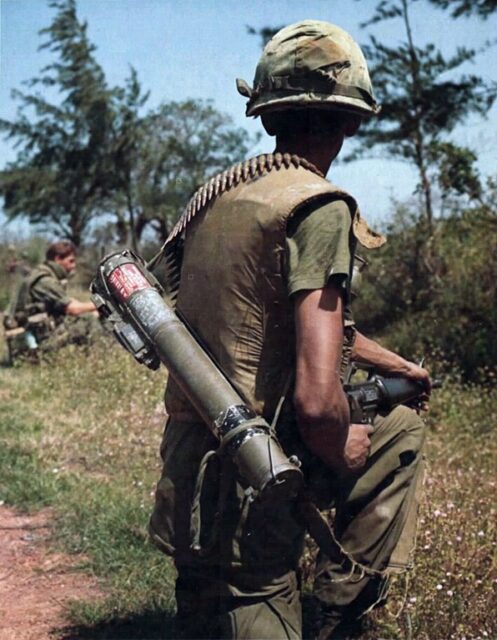
The M72 LAW, along with its second variant, the A1, can penetrate up to 200 mm against rolled homogeneous armor (RHA). The A2, A3 and A5 versions have an increased penetration of 300 mm, while the A4 increases this further to 355 mm. The greatest is accomplished by the M72 EC Mk. 1, which can break through armor that’s 450 mm thick.
While the M72 was developed as an anti-tank weapon, developments in tank armor have meant the weapon is unlikely to still be used in its original role. That being said, it’s still incredibly useful. It can easily destroy cars, trucks and lightly-armored vehicles. As well, doors, walls and enemy positions might as well be non-existent when faced with the weapon.
M72 LAW in combat
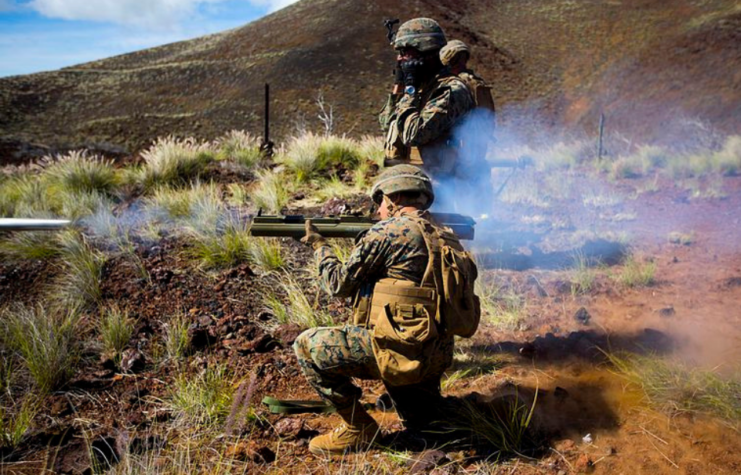
Entering service with the US military in 1963, the M72 LAW got its first taste of combat in Vietnam. While the weapon performed well, it wasn’t without its issues. There were instances of the rocket’s warhead exploding after being fired, but before reaching the target, which sometimes injured the operator. During the conflict and in the post-war period, all were recalled and only returned to service after improvements were made.
In the late 1970s, the US began to develop the FGR-17 Viper, a shoulder-fired anti-tank rocket launcher intended to replace the M72. The project was ultimately canceled, with improvements to the M72 deemed the better option. Despite this, the military continued looking for a replacement.
The Swedish-made AT4 was chosen, but it wasn’t as though the M72 was going anywhere. While the AT4 is good, a single soldier could carry two M72s, instead of a single AT4, not to mention the American weapon was cheaper; for Uncle Sam, two is definitely better than one.
The US Army’s 3rd Brigade Combat Team, 10th Mountain Division described the importance of the M72 in 2010: “The M72s provided the best balance of weight and bulk to combat effectiveness. It was considered an excellent munition to be used against insurgents firing from close and medium range. It was fast and easy to bring into operation, and it was considered to be both a good suppressive weapon and quite accurate and lethal at the same time.”
More from us: Benelli M4: The Superior Semi-Automatic Shotgun Built Specifically For Combat
Outside of Vietnam, the US used the M72 LAW in the Gulf War, as well as in Afghanistan and Iraq. International users, such as the United Kingdom, used the A1 during the Falklands War in 1982. The weapon is continuing to show its punch, with Canada, Norway and Denmark providing it to the Ukrainian Armed Forces for use in the ongoing Russo-Ukrainian War.
